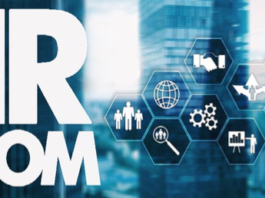Understanding the spectrum of disabilities
In the age of diversity, colours speak volumes, each hue narrating a unique story of identity, struggle, and resilience. In the realm of disabilities, this narrative is vividly painted through a spectrum of colours, each shade symbolising a distinct aspect of the disability experience. Among these, blue represents emotional and psychiatric disabilities, shedding light on the intricate challenges faced by individuals whose minds navigate a different terrain.
Psychiatric disabilities, unlike their physical counterparts, operate in the realm of the unseen, residing within the labyrinthine corridors of the mind. For those grappling with conditions such as depression, anxiety, bipolar disorder, or schizophrenia, the world is not merely a physical landscape but a battleground of emotions, thoughts, and perceptions.
Their brains, intricate tapestries woven with unique patterns, do not conform to the conventional rhythms of cognition, demanding a nuanced approach to care and support.
Blue symbolises this intricate interplay of emotions and psyche, urging society to extend a compassionate hand to those traversing this often tumultuous journey. Mental health facilities are needed as they act as sanctuaries of solace, offering a haven for individuals seeking refuge from the storms raging within. These facilities serve as beacons of hope, providing specialised care tailored to the intricate needs of psychiatric disabilities.
Despite strides in destigmatising mental health issues, a pervasive veil of misunderstanding continues to shroud psychiatric disabilities, perpetuating myths and misconceptions. For a person with a mental health condition, their brain works differently to others.
Their brain might have changes in chemicals and connections, affecting how they feel and think. For example, someone with depression may feel sad often because their brain has trouble regulating mood. Similarly, in conditions like anxiety disorders, the brain’s threat detection system may become hypersensitive, leading to exaggerated responses to perceived dangers.
This heightened state of arousal can manifest as persistent worry, restlessness, and physical symptoms such as palpitations and muscle tension. Therapy and medication can help their brain work better by balancing chemicals and teaching coping skills. Understanding and support from others can make a big difference, too. With the right help, they can manage their condition and live a fulfilling life.
Provision for facilities, training, and education cannot be overstated in the quest for inclusivity. Accessible accommodations must be tailored to therapeutic interventions. These provisions serve as pillars of support, fortifying individuals with psychiatric disabilities against the storms of adversity.
As a society, we must foster an environment of inclusion and accommodation. Together, we can pave the way for individuals to thrive, transcending the confines of their conditions to embrace their inherent worth and potential.
In our journey towards inclusivity, establishing mental health facilities is a crucial milestone. These facilities should provide treatment and serve as centres of education and advocacy, bridging the gap between understanding and action.
They should offer a comprehensive range of services, from therapy and medication management to vocational training and community integration programmes. By fostering a holistic approach to care, these facilities can empower individuals to reclaim agency over their lives and reintegrate into society with confidence and dignity.
However, the mere existence of such facilities is not enough; we must also prioritise education and awareness initiatives to dismantle the barriers of stigma and misinformation surrounding mental health.
Schools, workplaces, and communities should implement mental health literacy programmes that teach individuals to recognise signs of distress, offer support, and seek help when needed.
By fostering open conversations and cultivating empathy, we can create a culture where mental health is recognised as a fundamental aspect of human well-being, deserving of compassion and understanding.
We must address the unique challenges faced by families and caregivers of individuals with psychiatric disabilities. These unsung heroes often navigate complex systems of care while balancing their own emotional and practical needs. Providing them with access to respite care, support groups, and financial assistance can alleviate the burden of caregiving and prevent burnout, ensuring that they can continue to provide the necessary love and support to their loved ones.
As a nation, we are at a critical juncture in our journey towards inclusivity and equity for individuals with psychiatric disabilities. By investing in mental health infrastructure, promoting education and awareness, and supporting families and caregivers, we can create a society where everyone has the opportunity to thrive, regardless of the hue of their experience.
Let us embark on this journey together, guided by the principles of compassion, empathy, and solidarity, as we strive to build a more inclusive and resilient future for all.
It is mandatory that each citizen of this fair nation answers these questions and weighs in on the current situation surrounding mental health:
Where are we as an island in developing one of these facilities?
Where are we as a nation when it comes to educating individuals about mental health?
Where are we as a nation when it comes to supporting families and individuals who fall within the blue spectrum?




